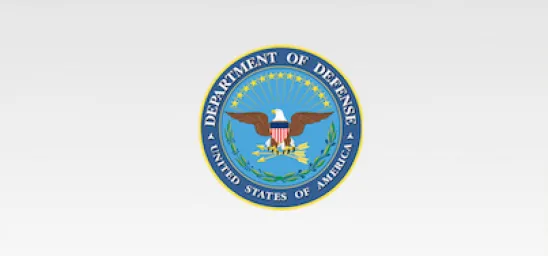On July 14, 2020 the Department of Defense (“DoD”), General Services Administration (“GSA”), and the National Aeronautics and Space Administration (“NASA”) published an Interim Rule amending the Federal Acquisition Regulation (“FAR”) in order to implement Section 889(a)(1)(B) of the FY 2019 National Defense Authorization Act (“NDAA”)[1] The Interim Rule is effective August 13, 2020, and applies to all solicitations issued after (or resulting in contracts that will be awarded after) the effective date. Interested parties have until September 14, 2020 to submit written comments for consideration in the formation of the Final Rule.
Section 889 has two key sections – Part A and Part B. Part A, which went into effect via interim rule on August 13, 2019, prohibits executive agencies from purchasing from contractors restricted products and services from certain Chinese telecommunications companies (e.g., Huawei and ZTE, among others). As we’ve discussed previously (here, here, and here), the Part A rule created new FAR provisions and two key contract clauses. While there had been discussions on pushing back the implementation date for Part B, this Interim Rule confirms contractors will need to work to meet the compliance deadline coming next month.
FAR Changes to Implement Part B
Part B, which is the focus of the new Interim Rule, prohibits executive agencies from working with contractors that use covered telecommunications equipment or services, even if that use is unrelated to the contractor’s federal business. The statutory language is quite broad:
[The Government shall not] enter into a contract (or extend or renew a contract) with an entity that uses any equipment, system, or service that uses covered telecommunications equipment or services as a substantial or essential component of any system, or as critical technology as part of any system.
Because of the apparent breadth of the statutory language, the FAR rule implementing Part B has been highly anticipated by companies – large and small – that do business with the federal Government.
To implement the Part B prohibition, FAR 52.204-24 and FAR 52.204-25 will be revised.
The Interim Rule updates FAR 52.204-24, requiring contractors to submit an additional representation with each offer stating whether, after a “reasonable inquiry,” the offeror uses covered telecommunications equipment or services. The Interim Rule further provides that “a reasonable inquiry is an inquiry designed to uncover any information in the entity’s possession about the identity of the producer or provider of covered telecommunications equipment or services used by the entity. A reasonable inquiry need not include an internal or third-party audit.”
This representation will be required for solicitations issued after (or resulting in contracts that will be awarded after) August 13, 2020. Like it did with Part A, to reduce the burden on offerors, the Government plans to update the System for Award Management (“SAM”) to allow offerors to make this representation annually.
The Interim Rule also updates FAR 52.204-25 to include additional language from Section 889 prohibiting executive agencies from entering into a contract (or extending or renewing a contract) with an entity that uses any covered telecommunications equipment or services as a substantial or essential component or critical technology (unless an exception applies or a waiver is granted). Notably, contractor “use” is not restricted to usage in the performance of work under a federal contract.
Scope and Applicability
The application and scope of the rule is quite broad in many respects. Namely, it will apply to all FAR contracts, including contracts under the micro-purchase threshold and contracts for the acquisition of commercially available off-the-shelf (“COTS”) items.
While the overall scope remains broad, it appears the drafters of the Interim Rule sought to give contractors some relief through useful limitations. For example, Part B will apply at the prime contractor level only, and there will be no required flow down to subcontractors. This is because, according to the drafters, the prime is the only “entity” that the agency “enters into a contract with.” As such, the term “offeror” will continue to refer only to the entity that executes the contract with the Government.
Additionally – at least for now – the Interim Rule applies solely to the offeror, and not to subsidiary or affiliate companies. However, for the final rule, the FAR Council is considering expanding the scope to require that the prohibition and representation apply to the offeror as well as any affiliates, parents, and subsidiaries that are domestic concerns. Notably, this implies that even if the scope is expanded to apply to subsidiary and affiliate companies, it will not apply to foreign subsidiaries or affiliates.
Finally, to provide clarity regarding when an exception to the prohibition applies, the Interim Rule adds new definitions for terms that are not currently defined in either Section 889 or the FAR, including “backhaul,” “interconnection agreements,” and “roaming.” These definitions are important because Section 889 contains an exception allowing for the procurement of services that connect to the facilities of a third-party (such as backhaul, roaming, or interconnection arrangements). However, the Interim Rule clarifies this exception applies only to the Government agency and not to the contractor’s use of such service. “As a result, the Government is prohibited from contracting with a contractor that uses covered telecommunications equipment or services to obtain backhaul services from an internet service provider, unless a waiver is granted.”
Guidance for Compliance
On March 2, 2020, DoD held a public meeting to facilitate planning for the pending implementation of Part B.[2] Generally, companies expressed concern regarding the breadth and vagueness of the statutory language, and expressed the desire to better understand how to comply with Part B. Part of the Interim Rule appears to be directly aimed at providing such guidance. As such, the Interim Rule requires that contractors develop a compliance plan and provides suggestions for how contractors can adopt a “robust, risk-based compliance approach [to] help reduce the likelihood of noncompliance.”
As a practical matter, the Interim Rule outlines six steps that should be part of the entity’s compliance plan. These include (1) Regulatory Familiarization, (2) Corporate Enterprise Tracking, (3) Education, (4) Cost of Removal (if the entity identifies and decides to remove existing covered telecommunication equipment or services), (5) Representation (to the Government), and (6) Cost to Develop a Phase-out Plan and Submit Waiver Information (for entities for which a waiver will be requested).
Conclusion
While the Interim Rule falls short of addressing all concerns raised regarding the implementation of Part B, it does appear the drafters have taken steps to reduce the drastic impact of implementation based on industry feedback. It offers some new definitions and information intended to provide clarity and narrow the focus, while still addressing the privacy and security risks associated with using covered Chinese telecommunications equipment and services. Contractors should begin (if they haven’t already) assessing their use of the covered technology, and based on the information available, work to develop a robust compliance plan.
FOOTNOTES
[1] Pub. L. 115-232.
[2] Sheppard Mullin attorney, Nikole Snyder, attended the public meeting. Some of the information contained in this Blog is based on Ms. Snyder’s notes and impressions of the meeting. Information, including presentation materials from that meeting, are available at https://www.acq.osd.mil/dpap/dars/section889.html.




 />i
/>i

